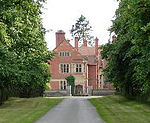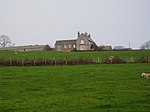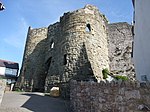Henllan
Use British English from October 2014Villages in Denbighshire

Henllan is a village and community in Denbighshire, Wales with a population of approximately 750 (OfNS/2004) and lies in the countryside, approximately 2.25 miles (3.5 km) north-west of the walled town of Denbigh. The name is Old Welsh, Hên-llan, meaning "old church-enclosure". The population had increased to 862 at the 2011 census.The Grade I listed country house, Foxhall Newydd, lies to the southeast. The country house retreat Eriviat Hall also lies outside the village. The Llindir Inn, reputed to be haunted, dates to the 13th century.
Excerpt from the Wikipedia article Henllan (License: CC BY-SA 3.0, Authors, Images).Henllan
Denbigh Street,
Geographical coordinates (GPS) Address Nearby Places Show on map
Geographical coordinates (GPS)
| Latitude | Longitude |
|---|---|
| N 53.201 ° | E -3.463 ° |
Address
Denbigh Street
LL16 5AR , Henllan
Wales, United Kingdom
Open on Google Maps










